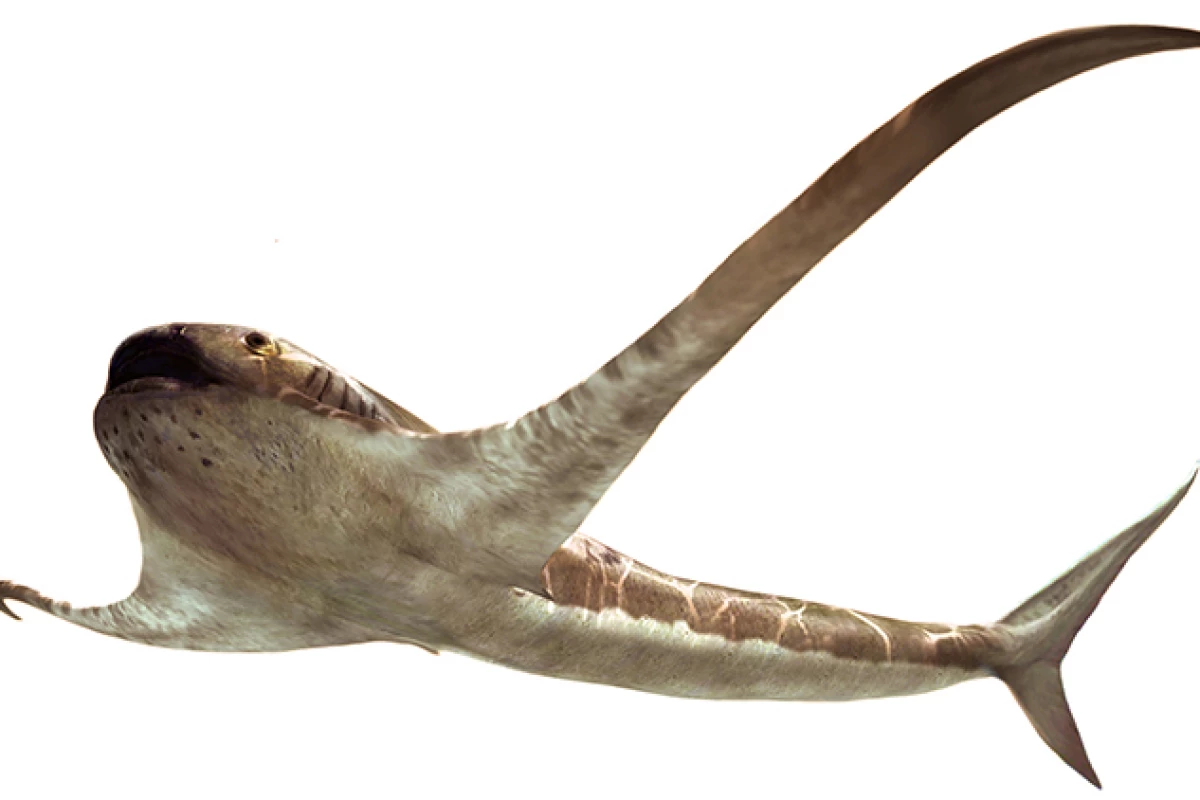The whale shark and the manta ray are perhaps two of the ocean's most fascinating large fishes. Well, scientists have now announced the discovery of a prehistoric ancestor of both, that looked like a cross between the two.
Named Aquilolamna milarcae – or the eagle shark – the creature was a member of the elasmobranch group of fishes, which includes modern sharks and rays. Although the cartilaginous skeletons of elasmobranchs typically don't fossilize, they will occasionally do so under the right conditions.
Such was the case with the 93-million-year-old remains of an Aquilolamna, which were unearthed near the northern Mexican town of Vallecillo in 2012. A recent analysis by an international team of scientists determined that the skeleton was that of a previously unknown species.

Like a shark, the creature had a streamlined "torpedo-shaped" body, and a tail with a longer upper lobe. But, like a ray, its pectoral fins took the form of wing-like appendages. It is therefore thought the animal used its tail for propulsion, and its "wings" for balance. The fossilized specimen, which was likely an adolescent, was 1.65 meters (5.4 ft) long and had a 1.9-m (6.2-ft) wingspan.
Additionally, the shark's wide mouth and very small teeth strongly suggest that it fed on plankton … just as today's whale sharks, basking sharks and manta rays do. Previously, paleontologists knew of only one other group of large plankton-feeding fish – pachycormidae – which swam the oceans during the Cretaceous period. The discovery of Aquilolamna milarcae bumps that number up to two.
A paper on the discovery was recently published in the journal Science. Lead scientist Dr. Romain Vullo, of France's CNRS research institute, discusses the team's findings in the video below.
Sources: CNRS, American Association for the Advancement of Science via EurekAlert




